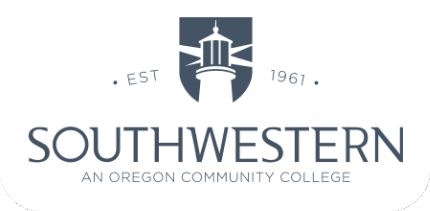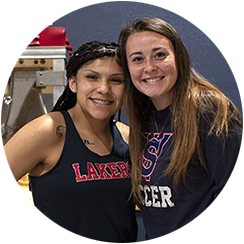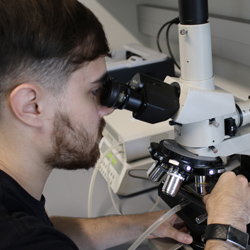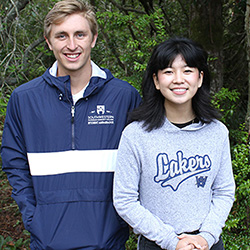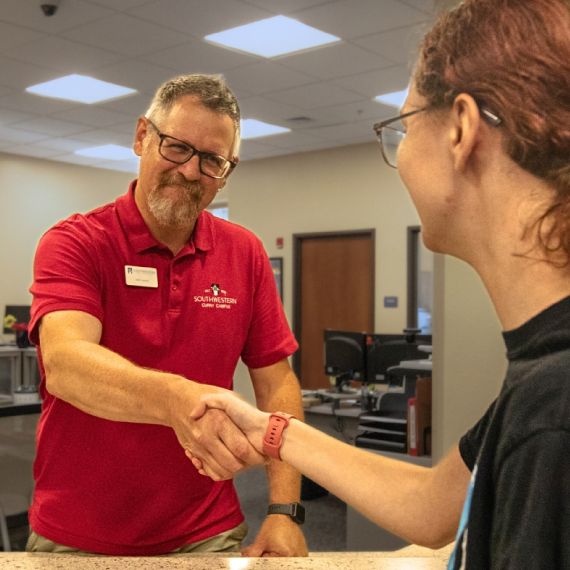COOS BAY, Ore. – Thanks to Southwestern Oregon Community College Foundation, donors and grants, the College has purchased an X-ray fluorescence spectrometer, or XRF.
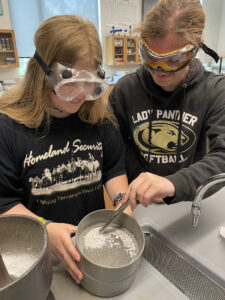
Student researchers Tia DeLorto and Ava Bolster prepare a sample for the XRF
Using this device, a student team kicked off a research project to unveil the secrets of coastal rocks and fossils. The XRF is a tool that tells researchers what elements are in a variety of materials – solutions, solids, or crushed solids of samples like rocks, soils, metals or even fish and plants – by zapping the sample with X-rays and reading the energy that bounces back. Each element gives off a unique energy signature, helping researchers determine the elemental composition.
“The XRF is a power tool for conducting cutting-edge scientific research, but also for broader impacts ranging from testing soil quality to testing the purity and quality of locally produced food,” said Dr. Win McLaughlin, Assistant Professor of Geology at Southwestern. “We’re not only able to offer those testing services via student-led research projects, but also give students a set of skills with a wide range of potential for employment in different industries.”
Under the guidance of McLaughlin and Derek Morrelli, Assistant Professor of Chemistry, teams of students will engage in two initial research projects. One upcoming project will analyze a fossil walrus jaw collected in the 1930s from Fossil Point at Coos Bay. By matching the elemental signature of the jaw’s surrounding sandstone with regional rock formations, the team aims to determine its geologic origin. They hope to determine whether the fossil represents the oldest walrus fossil found on the U.S. mainland.
Tia DeLorto, a 2025 graduate of Southwestern and student researcher from Prineville, Oregon, discovered her passion for geology through courses with Dr. Win McLaughlin. Inspired by her studies, she plans to pursue a career in the field. “Learning about and preserving the natural world is important to me,” she says. “This technology is just one of the tools that helps scientists do that.”
Team member, Ava Bolster from Gold Beach, is a marine biology major who will return to SWOCC this fall. “I’m focused on marine biology and Tia is studying geology, but this technology has applications across both fields — and many others,” she explains.
Another project will use geo-chemical fingerprinting to measure uplift rates of marine terraces along the South Coast. These ancient shorelines, formed by tectonic uplift, hold vital clues to regional earthquake risk. More accurate modeling of uplift patterns will provide data that can be used to develop more accurate seismic maps from Reedsport to Brookings.
Students also are considering projects to analyze fish for metal contamination and to look at soil quality in former mining sites.
Over the next year, up to 60 students across three academic terms will use the XRF in coursework and projects. Some research will also tie in with research at the University of Oregon Earth Science Department.
To learn more about STEM degrees at Southwestern visit: https://www.socc.edu/programs-classes/stem/.
